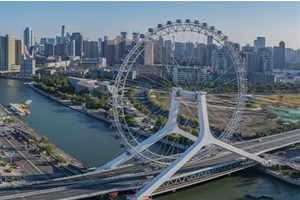Guilin tourism in February
February is suitable for traveling to Guilin.
It's not so cold in the north. The average temperature in Guilin in February is 7℃-13℃, and the cities with the highest average daily temperature in Guilin in February are Baise (22℃), Beihai (13℃) and Chongzuo (19℃).
The cities with the lowest daily average temperature in Guilin in February are Baise (9℃), Beihai (7℃) and Chongzuo (4℃). Geography/Climate of Guilin: Guilin is located at low latitude and belongs to the subtropical monsoon climate. The territory has a mild climate, abundant rainfall, long frost-free period, abundant sunshine and heat, long summer and short winter, four distinct seasons and basically the same season of rain and heat, and the climatic conditions are very favorable.
Of course, the best season for Guilin tourism is from April to October every year, which is also the peak period of tourism. There will be many tourists in Guilin with a suitable climate, room reservation and transportation will also reach a climax, and the price will rise, so it is best to avoid this time and choose an off-season trip to savor the beautiful scenery of the world.
Brief introduction of Guilin scenic spots:
Guilin City is located in the alluvial plain of Lijiang River Valley. In the Tang Dynasty, the capital city of Gui Zhou (Guilin) was built with the intersection of Lijiang River and Yangjiang (now called taohuajiang) as a city wall, with Lijiang River and Yangjiang River as a city defense system in the east and west, and Diecai Mountain and Baoji Mountain as a land defense in the north, and the city and sub-city were enclosed by the vault, which objectively formed an urban pattern surrounded by mountains and rivers.
In the Song Dynasty, the city was built by digging ponds along the mountains and rivers, and the market was built, which formed the existing urban inner lake water system (Song moat) and the land use pattern in the core area. In the Ming Dynasty, Diecai Mountain and Elephant Trunk Mountain were taken as the axis of the city, and Duxiufeng was taken as the core, and the city form of Jingjiang was basically formed.
There is often a relationship between the urban roads in Guilin and the mountains in the urban area, and the formed roads are linear and tortuous. Along the rivers and lakes, roads and waterways are in a compliant relationship, making the neighborhood near the water interesting.
Mountain light, water color, pastoral and walled city are ingeniously integrated, and the spatial pattern and structural form are unique. The city is in the scenery and the scenery is in the city, forming a harmonious urban form of "mountain-water-city" in Guilin.
Reference to the above content: Baidu Encyclopedia-Guilin City
What is the best month to travel to Guilin, Guangxi?
Spring (March to May) is the ideal season to visit Guilin. At this time, the climate is mild and flowers are everywhere. The landscape of Guilin is particularly charming under the sunshine in spring, which is the best time for outdoor activities and flowers appreciation.
Autumn (September to November) is a good tourist season in Guilin. Autumn is crisp and the sky is blue. The landscape and autumn leaves in Guilin paint a colorful picture, which is fascinating. In addition, folk activities and traditional festivals in autumn also make Guilin's cultural atmosphere stronger.
Summer (June to August) is hot, but it is a good place to escape the heat. Cruise ships and rafting activities in Lijiang River and Yangshuo provide tourists with the opportunity to spend a cool summer in the water town.
Although the temperature is low in winter (December to February), the urban scenery of Guilin is particularly quiet and warm in winter. Visitors can experience the winter charm of scenic spots such as Elephant Trunk Mountain and Seven Star Park in this season.
Famous scenic spots in Guilin, such as Lijiang River, Shili Gallery and Yinziyan, have their unique natural beauty and cultural characteristics in any season, which are worth exploring.






